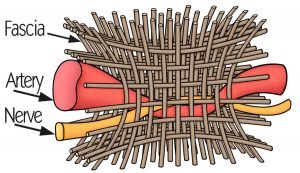Pain Is Not an Inevitable Part of Aging
/Weakened muscles, stiff joints, and pain are not an inevitable part of aging and I have the research to prove it.
I started to experience arthritis, bursitis, low back pain, and knee aches in my early 40s and considered it to be a normal part of aging. Likewise, many of my clients come to me having accepted a certain amount of pain that comes with getting older.
Recently, I learned of two studies that contradict this bit of common wisdom, suggesting that we can maintain our vitality into our 70s and beyond. Both studies show that not only can we prevent pain from weakened muscles and stiff joints, but that we can reverse these conditions in our older years.
In one study, active men in their 70s had better muscle function and energy production than inactive men in their 30s. The differences showed up in how far they could walk, their strength, and their general mobility. The active participants weren’t extreme athletes either--they put in around 150 minutes of moderate activity per week.
Most exciting of all, even participants who began regular exercise later in life showed significant protection against further decline. Our bodies remain responsive to activity at any age!
What about people who struggle to become active because of pain and immobility? The second study showed that stiffened tissues can be rejuvenated with the application of stretching and massage therapy.
Pain develops when we first become inactive for whatever reason—injury, surgery, or a prolonged period of immobility—and the connective tissue that surrounds and holds our muscles and organs in place (called fascia) conforms to these positions and movements becoming more stiff and fibrous.
Moving against the stiffened fascia is difficult and painful which causes us to stick with the dysfunctional positions or movements. This leads to the fascia becoming stiffer, which causes more pain when we move.
Researchers demonstrated that massage and stretching interrupted the pain cycle by remodeling the fascia and retraining muscles where fibrous connective tissue had developed.
That’s great news for those of us who are already “set” in our ways. We don’t have to sit around bemoaning our fate, but can start to explore gentle stretching, possibly with the help of a physical therapist depending on the severity of the immobility. A nice massage would also help soften tissues!
I see many clients who have resigned themselves to a “bad back”, achey hands, or weak knees because they know of no solution. The good news is that there are ways we can all start to feel better and start on the path to being free of pain.
Sources
1 “Impact of Physical Activity on Physical Function, Mitochondrial Energetics, ROS Production, and Calcium Handling Across the Adult Lifespan in Men”, https://Cell.com/cell-reports-medicine
2 “Manual therapy prevents onset of nociceptor activity, sensorimotor dysfunction, and neural fibrosis induced by a volitional repetitive task”, https://Pubmed.ncbi.nlm.nih.gov
3 “Downward Facing Rat? How Rat Yoga is unraveling the Mystery of Back Pain”, https://bwhclinicalandresearchnews.org/2017/09/08/downward-facing-rat-how-rat-yoga-is-unraveling-the-mystery-of-back-pain/












